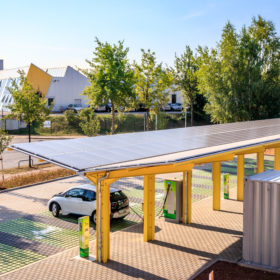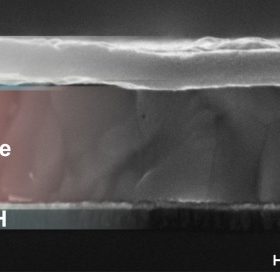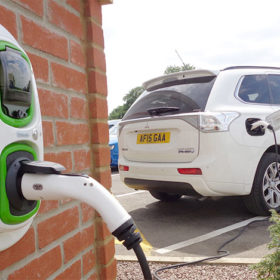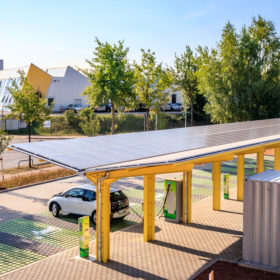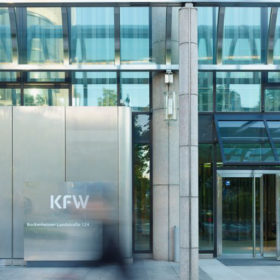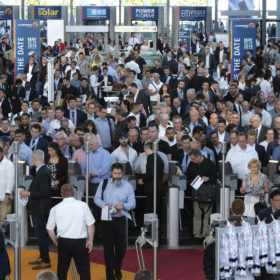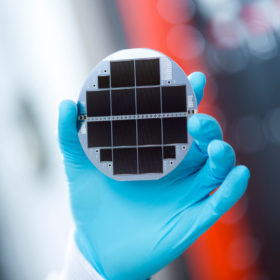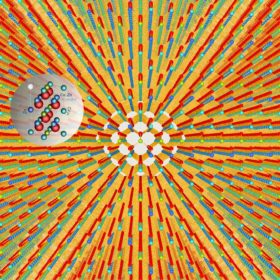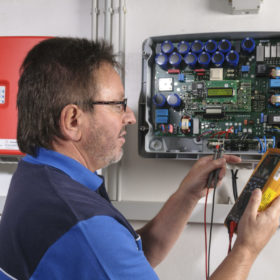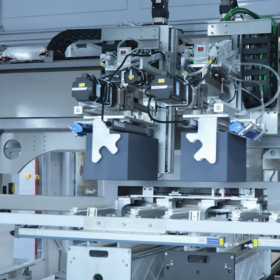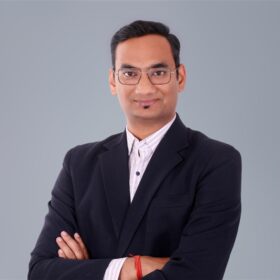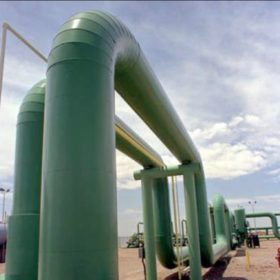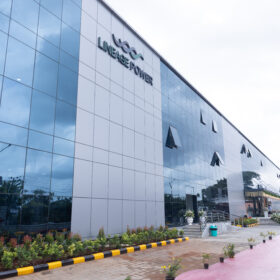The long read: Getting rolling
The first companies are demonstrating that today it can be worthwhile commercially to back electric vehicles in combination with solar generation and storage. Particularly in the case of public charging stations, solar power used for electric vehicle charging could become the basis for a profitable operator model in the future.
German researchers achieve 25.5% efficiency for perovskite tandem solar cells
The research team was able to improve the cell efficiency by 2.1%. The cell silicon layer was etched on the back-side, while a a polymer light management (LM) foil was applied to the front-side of the device.
The long read: Cutting down on copper
Controllable, distributed battery storage systems can help avoid bottlenecks in power distribution networks. That reduces the cost of grid expansion, but to turn this use of storage systems into a business model, a number of conditions still have to be met.
The weekend read: Getting rolling
The first companies are demonstrating that today it can be worthwhile commercially to back electric vehicles in combination with solar generation and storage. Particularly in the case of public charging stations, solar power used for electric vehicle charging could become the basis for a profitable operator model in the future.
KfW signs €200 million loan agreement with REC for rural PV development
In 2015, Germany and India signed a deal outlining plans by Germany to provide loans amounting to €1 billion for the development of Indian solar PV plans. Loans are provided through development bank, KfW. On the Indian side, REC issues low-interest loan schemes in conjunction with private sector participation to disperse the funds.
Minister outlines plan to become global renewables leader, at Intersolar Europe
Underlining India’s commitment to becoming the global renewable energy leader, Shri Anand Kumar, secretary of the Ministry of New and Renewable Energy, said the country plans 500 GW of capacity by 2030. He also underlined plans to become a solar and storage manufacturing hub; and said the International Solar Alliance needs to widen its membership.
Germany’s Fraunhofer ISE announces 33% efficiency for multi-junction solar cell
Together with Austrian equipment manufacturer EVG, Fraunhofer ISE has achieved an efficiency of 33.3% on a multi-junction solar cell. The highlight of the cell is the ultra-thin II-V semiconductor layer. However, it will be a few years before mass production is possible.
German scientists use germanium to improve performance of kesterite solar cells
Although current efficiencies for solar cells based on kesterite do not exceed 12.6%, the use of germanium may enable the development of cells with a higher energy band gap.
Cell manufacturer ranking
pv magazine teams up with solar market analysts at IHS Markit to run through the top 10 crystalline silicon cell manufacturers of 2017, and the events that shaped their market landscape throughout the year.
TÜV Rheinland exposes inverter, battery hacking vulnerabilities
Testing from TÜV Rheinland has revealed that PV inverters and battery storage systems are vulnerable to hacking. By changing system parameters, a hacker could potentially cause a battery system to corrode, “making it like a ‘bomb’.”
